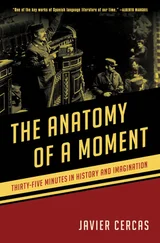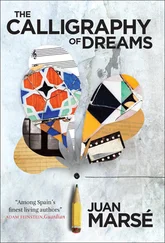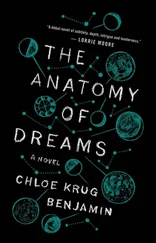Keller’s timing was impeccable: his research also emerged in the midst of a cultural fascination with the unconscious mind and its capacity for violence. As part of my reading that summer, I was expected to familiarize myself with two watershed trials. In 1988, a person was acquitted, for the first time, of murder while sleepwalking. Ken Parks, an unemployed high school dropout in his midtwenties, had risen from sleep and driven fourteen miles to the home of his in-laws. He nearly killed his father-in-law, and he stabbed his mother-in-law to death. He woke several hours later to find himself standing above her body, with no memory of the event and a faint feeling of pain in his hands. He was acquitted on the basis of sleepwalking at a trial whose verdict was later upheld by the Canadian supreme court, which declared that his actions were due to a noninsane automatism. The supreme court believed that Parks’s actions were so rare, so anomalous, that they would never be repeated; but the Parks case, it turned out, would set a controversial precedent.
In 1999, the year I left for college, Keller testified as an expert witness at the trial of Scott Falater, a Mormon and father of two. That night, Falater attempted to fix the pump that filtered water for his backyard pool, but he went to bed when it became dark around nine thirty. About half an hour later, Falater rose, just like Ken Parks, and returned to the pump. What happened next is the product of expert conjecture and the eyewitness account of Greg Koons, Falater’s neighbor, who saw Falater drag the stabbed body of his wife, Yarmila, into the pool and drown her. Falater then changed into his pajamas, tucked his bloody knife and work clothes into the wheel well of his car, and returned to bed. He woke, along with his children, to the sound of police dogs. Yarmila had been stabbed forty-four times, and though the evidence proved resolutely that Falater had killed his wife, he never regained any memory of the event.
The court ordered an array of psychological tests, but the murder could not be tied to a psychotic episode, a seizure, or a dissociation disorder. The psychiatrist could not diagnose him with any psychiatric illness, and Falater’s scores on the Minnesota Multiphasic Personality Inventory showed him to be almost ideally normal, with no psychopathic tendencies. They found only that Falater had been anxious about an ongoing struggle at work, which had left him feeling insecure and emasculated, and that his sleep had suffered. Falater had begun to use caffeine pills during the day, and at night, his rest was difficult and uneven.
Unlike Ken Parks, Scott Falater was pronounced guilty. The prosecution argued that Yarmila’s murder had been consciously planned and executed, and the jury was not ready to believe something as outlandish as the idea that Falater had been sleepwalking. But the case became a point of contention in an ongoing debate about the role of sleep in emotional regulation—and what happens when the regulation process is disturbed. Keller saw a disordered dream life as a critical indication of unrest in the patient’s waking life—a place of uninhibited, instinctive emotionality, and therefore, a site of both great danger and great healing.
“For dreamers to return to a state of mental health,” he said, “they must understand their dreams, not erase them. The patients I see keep cycling through the same nightmares for a reason. And until they discover what that reason is, they’ll never be safe—and neither will their bedmates.”
Keller wanted Gabe and me to be able to dream lucidly before we helped him to train others. He taught us the MILD technique, Mnemonic Induction of Lucid Dreams, developed by Stephen LaBerge. It was a four-step process that Gabe picked up with relative ease, but I was never really able to access it, as much as I understood it conceptually. The first step was dream recall. Like Keller’s workshop participants, we slept with notebooks beside us, writing down whatever we could remember as soon as the alarm went off. Next came reality checks: in order to recognize a dream state, Keller taught his patients to look for certain common markers. I knew the signs: difficulty reading words, flashing lights or ill-defined light sources, problems with mechanical objects, and, of course, the dead. I knew to meditate before bed—my body soft and relaxed until the edges of the waking world began to smudge and dissolve—but as soon as I sank into sleep, my mind went dark until I woke, disoriented and increasingly frustrated. Step three, lucid affirmations—commands programmed into memory and recalled later, while dreaming—was even more hopeless. Keller had me focus on my hand— When I see my hand in my dream , I was to repeat to myself, I will know I am dreaming —but whether I saw my hand in my dream or not, I never remembered it. The final step was to visualize a recent dream while awake, but since I couldn’t remember my dreams, I spent most of these sessions lying irritably on my blue mat.
Finally, Keller encouraged me to wake myself out of REM sleep with an alarm clock and immediately write down whatever I could remember. I still couldn’t grasp whole narratives, but this method allowed me to piece together the recurring dream that occupied my mind that summer. Perhaps I would have been able to remember even more if I had not stopped the alarm clock system. I didn’t want to know any more of the dream, and I didn’t want there to be a document that preserved it. I destroyed what I had, feeding it into the shredder when Gabe and Keller were out, and I never brought it up with Keller again.
In the dream, I stood before a mirror in an old public bathroom, which seemed to be part of a previously grand hotel that had fallen into disrepair. The bathroom had beautiful details: crown molding, tarnished gold faucets, turquoise-and-black-tiled walls. The mirror was so foggy and stained that I couldn’t see myself clearly. I turned on the faucet, but no water came out, though I could hear it running in the pipes.
At some point an elderly woman came into the bathroom. She was unremarkable—of medium build, white-haired, dressed in a dignified, old-fashioned way. The only exotic thing about her was the purse she carried: large and rectangular, like an antique doctor’s bag, with a giant metal buckle. It was made of a gleaming purple material that appeared, upon closer inspection, to be snakeskin. I observed the purse with interest but was otherwise indifferent to the woman. She walked into a stall; I heard a muffled drop as the purse was set down on the floor. I tried the faucet again, and this time, water rushed out.
I stared at the water before turning the faucet off again. The woman emerged from the bathroom stall. She was naked from the waist down. She still wore a silk blouse and cardigan, but her pressed pants and heels, even her underwear, had been removed. Between her legs was a rough gray pelt. She did not seem to notice me; she washed her hands in the water—there was no soap—and glanced briefly in the mirror. Then she walked out of the bathroom as perfunctorily as she had arrived.
The door of the stall she had used swung open with a slow, rusty whine. It was empty except for the purple snakeskin purse. Loud noises came from outside the bathroom, and I knew that others would soon come in search of the purse, that I would be implicated as its new owner. I needed to move the purse, but first I had to see what was inside it. I went into the bathroom and pressed on the buckle. There was a click like the sound of a gun’s safety being switched off. The lid of the purse opened automatically, willingly. And then I woke.
I told Gabe about the dream, late at night in the Bunk Room when we knew Keller had already gone to sleep. He listened with the knit-browed interest of a psychiatrist, and though there was no judgment on his face, he couldn’t unlock the dream any better than I could. We still slept in our own beds—still barely touched, aside from the brief brush of arms as he sidled past me in the kitchen—but we had begun to talk late into the evening, Gabe leaning over the ledge of his top bunk and I looking up from below. Sometimes we talked about our dreams. Other times, we talked about Keller.
Читать дальше












